U Study Shows Barriers Economically Disadvantaged Students Face in Higher Education
The Block U on the University of Utah Campus in Salt Lake City, Utah on July 12, 2017. (Photo by Adam Fondren | Daily Utah Chronicle)
August 27, 2022
A recent Kem C. Gardner Policy Institute study on economically disadvantaged students in Utah’s higher education system shows the close correlation between income level and educational attainment and the barriers some Utahns face in pursuing higher education and improving their income level.
Economically disadvantaged students face many barriers including being more likely to work more hours per week, attend college part-time, delay enrollment, have children and family responsibilities, be a first-generation college student, be less likely to engage in academic and social experiences and utilize support services, according to the report.
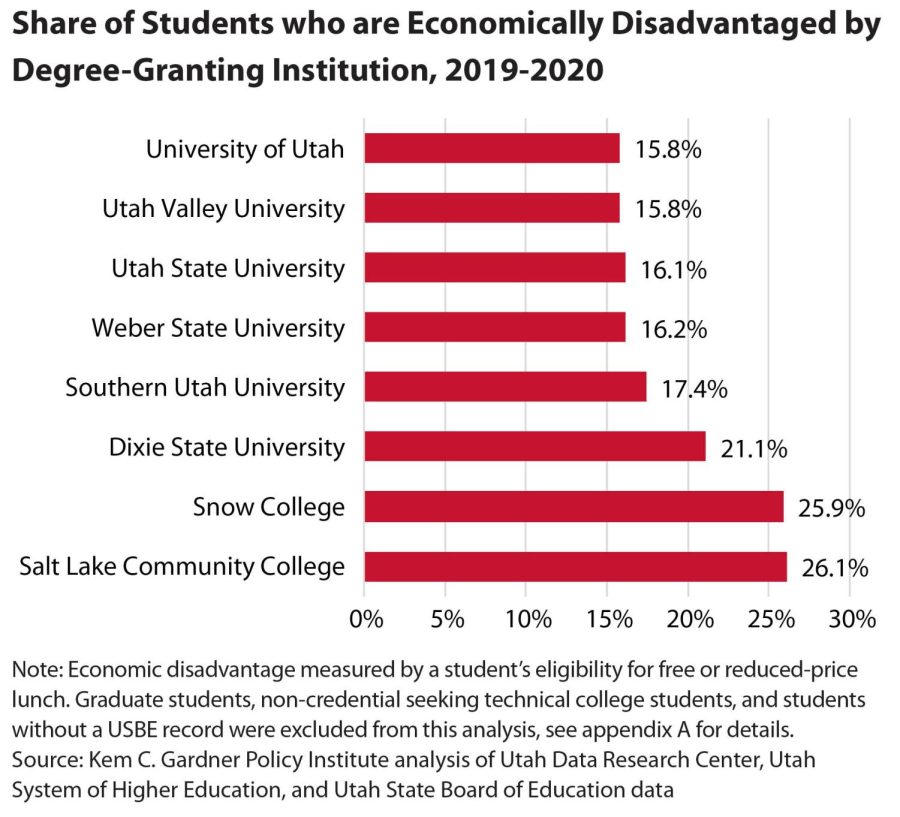
Economic disadvantage is measured in various ways, but the report’s primary focus is on an individual’s family income from childhood, measured by eligibility for free or reduced-price lunch in K-12.
Deylan Gudiel, a transfer student from Brigham Young University-Hawaii who is starting at the University of Utah this fall, was eligible for free or reduced-price lunch growing up and is Pell Grant eligible.
“I think one of the most difficult things about being economically disadvantaged is seeing how all of your peers are able to progress so much faster and easier than you because of their privilege and are praised for doing so,” Gudiel said in an email interview. “It can be hard not to fall into comparison or feeling like you’re falling behind.”
Gudiel said he’s always worked while being a full-time student, which took time away from studying.
“I’ve done school part-time, full-time” he said. “I’ve taken months, even a year off to help family, work, save money, whatever I needed to do.”
Barriers to FAFSA
The University Office of Scholarships and Financial Aid offers scholarships based on financial need, requiring students to fill out a Free Application for Student Aid to qualify. FAFSA completion rates in Utah are some of the lowest in the country, according to Andrea Thomas Brandley, the research associate who conducted the study. The report showed that just 52.6% of Utah’s higher education students completed FAFSA in 2016 and that number went down to 41.8% of students in 2021.
Gudiel said FAFSA is overly complicated to fill out and not catered towards low-income people, and he isn’t surprised how low FAFSA completion rates are. He noted that some people may not even own computers or have access to Wi-Fi.
“It was difficult for me as someone who has a high GPA and does well in school and is fluent in English — I can’t imagine how it would be for students in different situations,” he said.
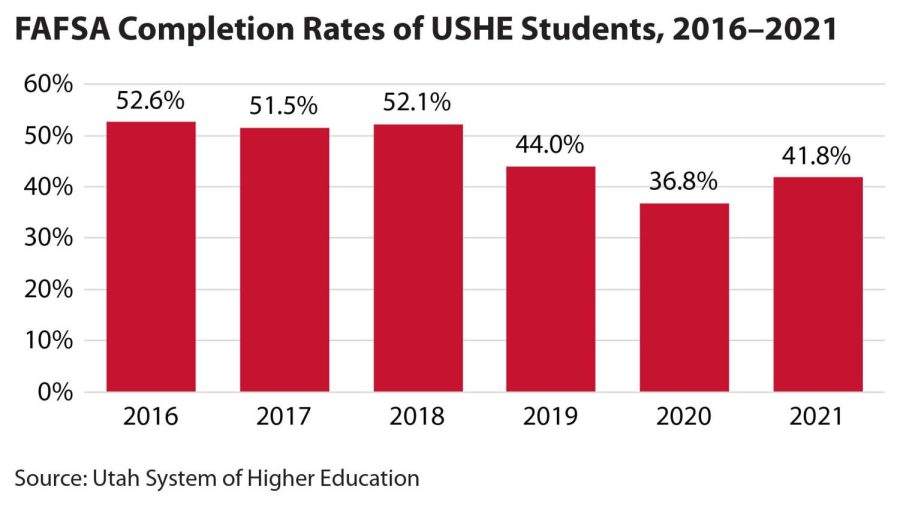
Anthony P. Jones, executive director of scholarships and financial aid, said it’s a complicated and layered issue, but low and declining FAFSA completion rates in Utah are puzzling given years of awareness campaigns and efforts to streamline the FAFSA process.
“Although there have been claims that the complexity of the application form is a barrier, gains over the last decade in simplifying the form and the application process reduce the veracity of such claims,” Jones said.
He noted examples of advances made in recent years including making the FAFSA electronic and reducing the number of questions through smart logic, which skips irrelevant questions based on applicant answers.
Jones said a substantial portion of the college’s outreach and awareness efforts are with the Utah System of Higher Education, which coordinates workshops at high schools statewide to help complete the form, as well as other scholarship and financial aid options.
Benefits of Education
There are many individual benefits to pursuing higher education such as higher earnings, better economic mobility, educational activities and being more likely to teach their children, Brandley said.
“There’s an intergenerational component that we could improve society long term through generations,” Brandley said.
Beyond individual benefits, Brandley said the societal benefits are clear and robust. The report notes unemployment rates and poverty rates decline with increasing years of education, while median earnings and economic mobility rise.
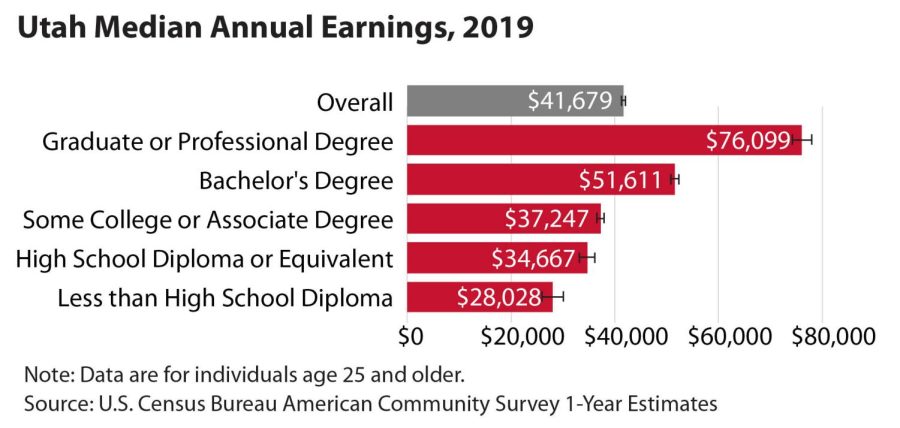
“Not only can we improve the lives of a fairly large portion of college students, but also then extend that throughout the state,” she said.
Gudiel said his advice to other economically disadvantaged students is to not compare themselves to anyone else’s progression or academic timeline.
“You are doing the best you can with the resources at your disposal, and even if it takes you 10 years to get your degree, it doesn’t mean you’re behind [or] less intelligent,” Gudiel said. “[It] means you had to have the dedication and resilience to overcome a system that is designed against you in order to elevate your life, break from a cycle of poverty, and achieve a brighter future for yourself and your family.”


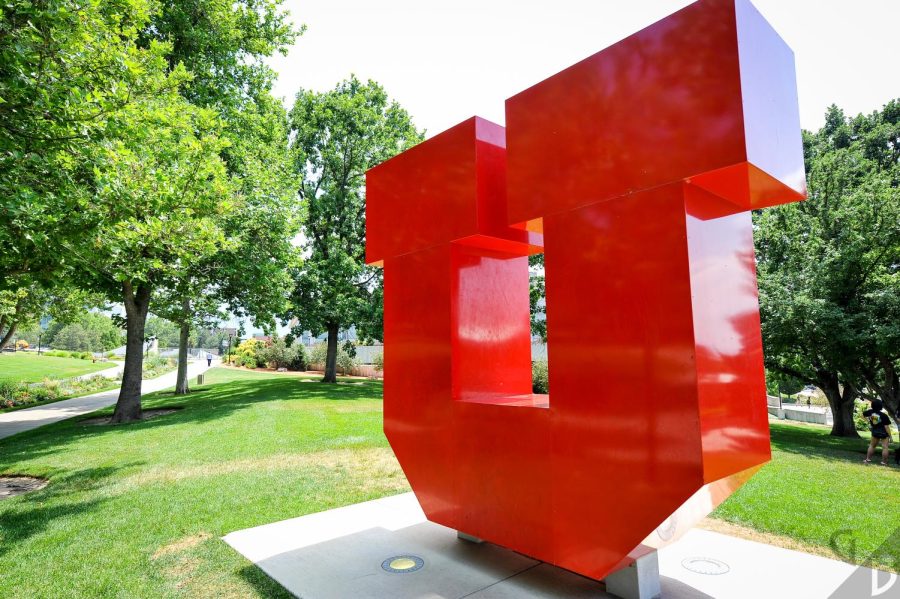

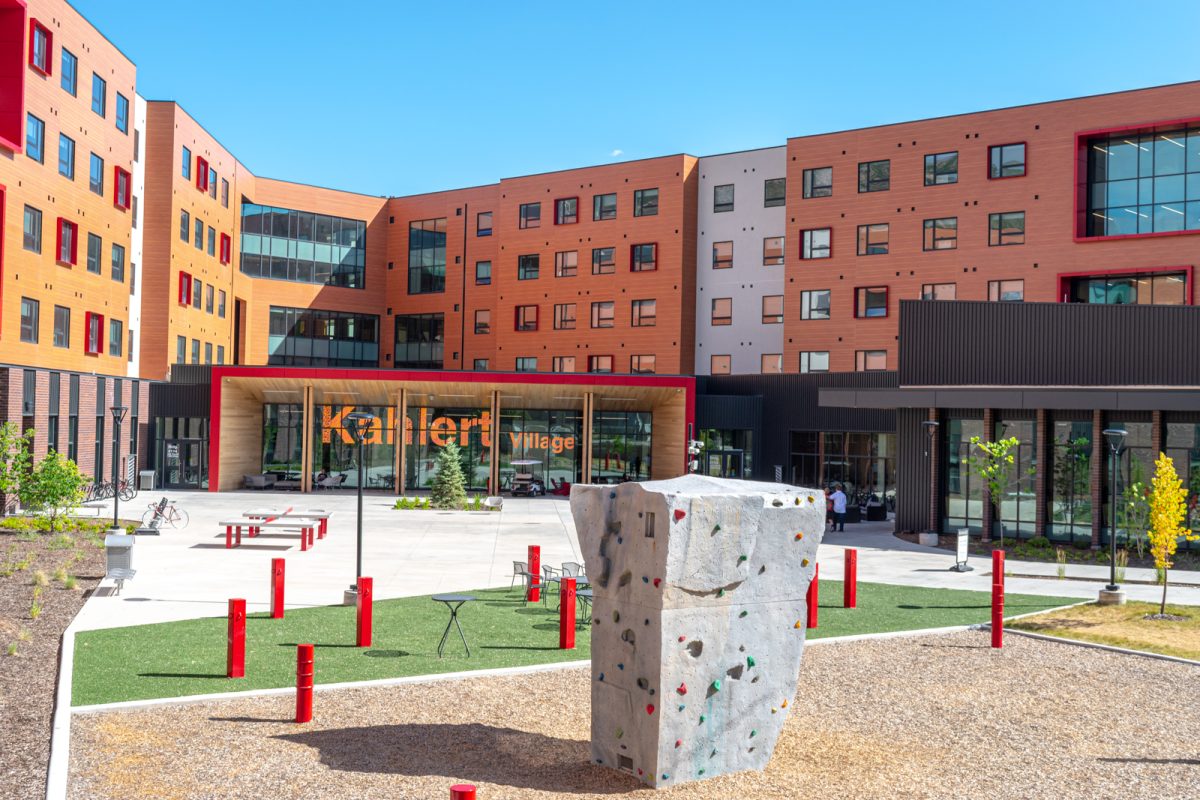







John Hedberg • Aug 28, 2022 at 9:47 am
FAFSA takes about 15 minutes if you have ready access to your tax forms. It’s easy; anyone can do it on their phone, so the idea of not having access is a little silly. About as silly as your statement that the “system is designed against you”, when it’s literally been designed for you, and it’s easy, far less limiting or strenuous than almost anywhere else in the world. My ancestors represent at least ten different ethnic groups. Why do you think people can’t wait to get into this country?
p.s. In most places on Earth, if you don’t work, you don’t eat. It’s staggering to hear you complain about a system so easy that you can get grants & loans with almost no effort. People are just smart enough to realize that incurring debt has consequences which actually do limit your future opportunities until you pay it, so they prefer to work, start families, and start putting aside savings for a down payment on a house, rather than be enslaved (literally) to a series of loans when they could have been living.
I don’t know many people who grew up in want (possibly in regions where jobs aren’t so readily available) who feel the sense of shame you seem to infer about working. It is possible to be intensely grateful to even have a steady job, which is not a given in other places in the world.
The real question today is: Is college worth the price? Campus is actually a place where good life values go to die, so who would voluntarily want to be here? The education is necessary for technical training in certain fields, but the life values on campus actually seem inverted from best-practice experience a lot of the time, so it’s not like folks are missing much by missing the campus experience. It’s like living with a baby whose midnight crying phases never ends, but just goes on and on and on and on…. Non-stop tantrum attention-seeking, rather a place for forming & developing functional, happy, self-fulfilled grown-ups.
Technical training aside, living a life in the working world teaches actual success perspectives, attitudes, and habits, so getting this training while avoiding campus is actually the goal of ‘people with few means’, since these success attributes make a difference between happy living and perpetual hunger. The stakes are real, so you don’t throw away your best chances by spending more time than you have to in an atmosphere which detracts from hard-won wisdom by its perpetual foolishness and never-ending grievance in the midst of blessings unheard-of on most of the planet.
If ignorance is bliss, campus is surely the heart of happiness on Earth!
Best,
With Love & good humor,
J Hedberg